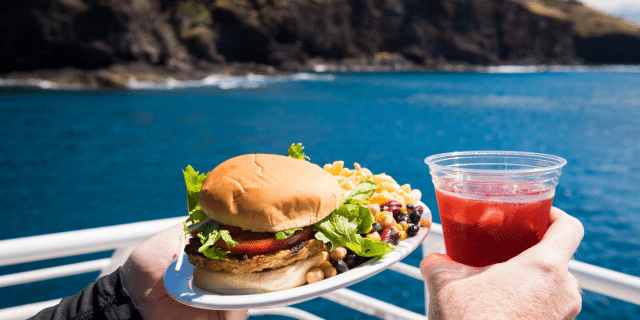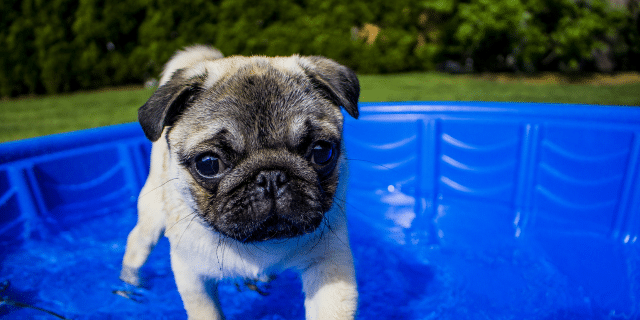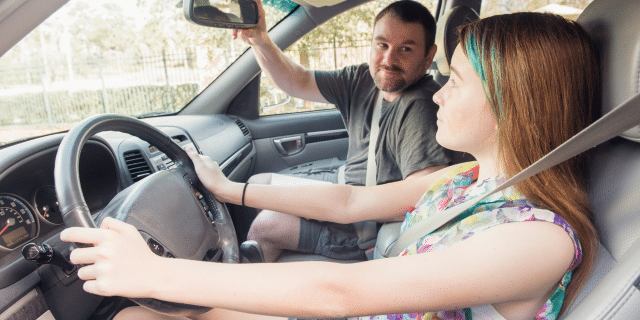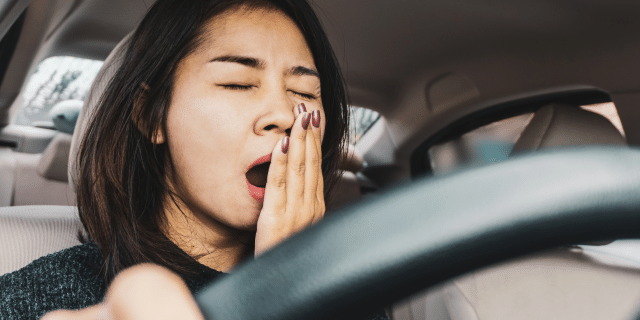
Easy Boat Snacks for Smooth Sailing
Sunshine, salty air, and smooth sailing—now all you need is the perfect snack. Whether you’re captaining a cruiser or just along for the ride, the right munchies can make or break your day on the water. We’ve rounded up easy, packable boat snacks that won’t melt or make a mess. Cooler-friendly and one-hand-approved, these treats are made for smooth snacking, no matter how choppy the waters get.
When you’re planning a boat day, your snack strategy matters. You want food that’s simple, satisfying, and won’t leave sticky fingers or stains. Even better? Snacks that hydrate, energize, and keep everyone happy from dock to dock. Here are some smart picks and tasty ideas to keep you fueled and floating. Add them to the list of what you’re keeping in your boat this summer.
The Snackle Box: Tackle Hunger in Style
What’s better than a charcuterie board? A portable one that fits in a tackle box! The “snackle box” is the ultimate grab-and-go boat snack solution. Use a clean, compartmentalized tackle box to store bite-size snacks like:
- Cubed cheese
- Deli meats
- Baby carrots and sliced cucumbers
- Grapes or apple slices (toss in lemon juice to prevent browning)
- Trail mix or mixed nuts
- Hard-boiled eggs (pre-peeled)
Make it fun and colorful and be sure to keep it chilled in your cooler. Bonus: it’s easy to pass around and keeps everything in its place—no balancing acts needed.
PB&J Pinwheels: A Classic with a Twist
Take the beloved peanut butter and jelly sandwich to the next level with pinwheels that are perfect for one-handed snacking.
How to make them:
- Flatten sandwich bread with a rolling pin.
- Cut off the crusts.
- Spread peanut butter (or almond/sunflower butter) and jelly on the same slice.
- Roll it tightly, then slice into bite-size spirals.
- Secure with toothpicks and pack them in a sealed container.
You can also do a quick version using crackers—just top with PB&J for an easy snack.
Pasta Salad in a Cup
Portion pasta salad into small, lidded containers for a satisfying, no-mess meal. Choose a pasta that holds its shape, like rotini or bowties, and toss with your favorite ingredients—think cherry tomatoes, olives, diced veggies, and cheese cubes. Keep it light with a vinaigrette dressing that won’t congeal in the cooler.
Muffins: Sweet or Savory
Muffins are an ideal boat snack—easy to hold, not too messy, and totally customizable. Try lemon poppy, blueberry, or even savory cheddar. Bake ahead using this master muffin recipe from Sally’s Baking Addiction and get creative with the mix-ins.
Walking Tacos: Boat Edition
Want something warm and hearty? Walking tacos are a hit for all ages. Prep the taco meat in advance (ground beef, turkey, or black beans with seasoning) and store it in a thermos to keep it hot.
What you’ll need:
- Single-serving chip bags, such as Fritos or Cool Ranch Doritos (avoid the regular variety which can stain orange)
- Taco meat in a thermos
- Small containers of shredded lettuce, cheese, diced tomatoes, olives and sour cream
When you’re ready to eat, crush the chips in the bag, then slice it open down the side. Spoon in the taco meat and let your guests add the toppings of their choice. The chip bag is the bowl—no plate required!
Thermos Dogs: Hot Dogs That Stay Hot
Yes, you can have hot dogs on a boat—without the grill! Just place cut-up hot dogs in a wide-mouth thermos and pour boiling water over them before sealing. By lunchtime, you’ll have warm dogs ready for buns or toothpicks. Simple and satisfying.
Cooler Treats & Hydration Hacks
A good cooler is your best boating buddy. Fill it with snacks that refresh and rehydrate, such as these that you can prepare the day before.
- Fruit kabobs: Skewer chunks of watermelon, pineapple, strawberries, and melon for a grab-and-go option.
- Frozen grapes: A naturally sweet, refreshing treat.
- DIY popsicles: Freeze lemonade with sliced fruit in plastic cups, insert popsicle sticks, and enjoy them as they melt.
- Water bottles: Freeze a few the night before—they’ll keep your cooler cold and melt into ice-cold drinks.
What to Skip
Some snacks just aren’t boat friendly. Avoid these to keep your deck—and your day—clean:
- Bananas: Call it superstition, but many boaters believe they bring bad luck. Better safe than sorry!
- Chocolate and sticky candies: They melt fast and make a mess.
- Stain culprits like red wine and Kool-Aid: One spill and your deck may never forgive you.
Pro Tips for Onboard Snack Success
- Storage matters: Use zip-top bags, silicone pouches, and plastic containers with tight lids.
- Pack extras: Boating builds appetites!
- Bring wipes and napkins: Even with tidy snacks, clean-up is a must.
- Stay shaded: Keep your cooler out of direct sun to maintain freshness.
- Bring plenty of water: Dehydration sneaks up quickly on the water.
Don’t Forget to Protect Your Boat
While you’re packing snacks and sunscreen, make sure your boat insurance is up to date, too. A good policy helps protect you, your passengers, and your vessel from unexpected mishaps—whether it’s a rogue wave or a run-in at the dock. California Casualty offers customizable coverage options for boat owners, so you can relax and enjoy every moment on the water. Smooth sailing and happy snacking!
This article is furnished by California Casualty, providing auto and home insurance to educators, law enforcement officers, firefighters, and nurses. Get a quote at 1.866.704.8614 or www.calcas.com.

Summer Pet Hazards: What Every Pet Parent Should Know
Summer is here, and our four-legged friends are ready to make the most of it—soaking up the sun, chasing butterflies, and joining us for backyard barbecues and beach days. But while the season is packed with tail-wagging fun, it also brings a few hidden hazards that can sneak up on even the most watchful pet parents. From sizzling sidewalks to tempting picnic snacks, summertime can be trickier than it looks. Here’s how to keep your fur babies safe, healthy, and ready for all the warm-weather adventures ahead!
Barbecues, Picnics, and Parties
Nothing says summer like a backyard cookout—but it’s not always a pet-friendly affair. Popular BBQ foods like rib bones, corn on the cob, and watermelon rinds may seem harmless but can cause serious health issues, including choking and intestinal blockages. Onions, grapes, and alcohol are outright toxic to pets, and treats like ice cream and potato salad can upset sensitive stomachs. Also be mindful of wooden skewers and toothpicks, which can splinter and cause internal injuries if chewed or swallowed.
Remind your guests not to share their food with your pet. Instead offer pet-safe treats as an alternative. Supervise your furry friend closely, especially if they’re known for getting into mischief—or are particularly sociable.
Lawn and Pool Chemicals
Beautiful lawns and sparkling pools can hide serious dangers. Fertilizers, pesticides, and pool chemicals are harmful if ingested, inhaled, or absorbed through your pet’s paws. Always store chemicals securely, clean up spills right away, and keep pets off freshly treated grass. When possible, choose pet-safe products that reduce the risk while still maintaining your outdoor space.
Dangerous Plants
Gardening this summer? Be sure your landscaping isn’t a hidden health hazard. Azaleas, lilies, rhododendrons, tulips, and daffodils are just a few of the plants that can be toxic to pets. Ingesting them can lead to vomiting, seizures, heart issues, and even death. Before heading out on a walk or letting your pet explore the garden, brush up on which plants are safe. (Check out our pets and plants blog for a detailed guide.)
Itchy and Stinging Insects
Summer means bugs—and lots of them. Fleas, ticks, and mosquitos can make your pet miserable and may carry dangerous diseases like heartworm and Lyme disease. Bees, wasps, and fire ants also pose risks, especially to curious pets who like to sniff and paw at anything that moves.
To protect your pet:
- Use flea, tick, and heartworm preventatives
- Check daily for ticks, especially after walks in wooded or grassy areas.
- Eliminate standing water and trim overgrown plants to deter pests.
- Monitor your pet for signs of bites or stings, such as swelling, excessive scratching, or difficulty breathing. In the case of a severe allergic reaction, seek veterinary help immediately.
Heat and Humidity
High temperatures and humidity can quickly lead to heat exhaustion or heatstroke, especially for older pets, overweight pets, or breeds with short snouts like pugs and bulldogs. Signs of heatstroke include excessive panting, drooling, and dry gums (a sign of dehydration). Your pet also may appear lethargic.
Always provide shade and fresh water and avoid intense activity during the hottest parts of the day. Never leave your pet in a parked car—not even for a few minutes. On a 75-degree day, the temperature inside a vehicle can soar to 100 degrees in just 30 minutes.
Also, be cautious of hot pavement and sand. Use the hand test: place your hand on the sidewalk for seven seconds. If it’s too hot for your hand, it’s too hot for paws. And don’t forget about sunburn! Pets can get burned too—especially on ears, noses, and bellies. Use pet-safe sunscreen, never human sunscreen, to protect exposed areas.
The Beach and the Pool
Many dogs love the beach, but it can come with unexpected dangers. Hot sand can burn sensitive paw pads, and ingesting sand can lead to a dangerous bowel obstruction. Sand can also irritate your pet’s eyes if it gets lodged under their eyelids.
As for water safety, not all dogs are natural swimmers. Never force your pet into the water, and always use a pet lifejacket, especially if you’re on a boat or near deep water. After a swim, rinse your dog off to remove salt or chlorine.
Fireworks and Thunderstorms
The loud booms of summer storms and fireworks can terrify pets, causing stress, anxiety, or even escape attempts. Prepare a safe, quiet space indoors where your pet can retreat. You can also try anxiety wraps, pet pheromone sprays, and soft music or white noise. For severe anxiety, talk to your vet about possible calming medications. And always secure doors, gates, and windows in case your pet tries to bolt.
Traveling with Your Pet
Planning a road trip with your fur baby? Keep your pet secured in a well-ventilated carrier or use a pet seatbelt harness. Never leave them unattended in a parked vehicle. Bring along water, treats, and poop bags, and schedule regular breaks.
Make sure your pet is microchipped and wearing ID tags with up-to-date contact info—just in case you get separated. If you’re flying, be sure to review your airline’s pet policy or check out our blog on flying with pets for extra tips.
One More Layer of Protection
We love our pets and no matter how careful we are, accidents happen. Pet insurance can offer peace of mind, helping cover unexpected vet bills so you can focus on keeping your pet happy and healthy all summer long.
This article is furnished by California Casualty, providing auto and home insurance to educators, law enforcement officers, firefighters, and nurses. Get a quote at 1.866.704.8614 or www.calcas.com.

Summer Driving Rules Every Parent Should Set
The freedom of summer is calling, and for many teens, that means hitting the road—often for the first time without a parent in the passenger seat. With new jobs, beach days, late-night hangouts, and spontaneous road trips on the agenda, it’s easy to forget that driving comes with serious responsibility. For parents, this season is a crucial time to set clear expectations behind the wheel. From curfews to passengers to phone use, establishing ground rules now can help your teen build smart habits that last far beyond the summer.
Follow intermediate licensing laws in your state.
Most states have graduated driver licensing (GDL) programs designed to help teens gain experience behind the wheel while minimizing risks. These often include rules like curfews, limits on passengers, and restrictions on highway driving. Start by familiarizing yourself with your state’s laws at www.ghsa.org. Then, build on those requirements with your own family rules. For instance, you might allow only daylight driving for the first month, then gradually expand driving privileges as your teen demonstrates responsibility.
Establish a nighttime curfew.
Driving at night is inherently more dangerous due to decreased visibility and increased likelihood of encountering impaired drivers. Teens, who are still developing experience and judgment, are especially vulnerable. Even if your state allows nighttime driving, consider setting a curfew that keeps your teen off the road during high-risk hours—often between 9 p.m. and 6 a.m. You might also require that they log a certain number of supervised nighttime hours with you before being allowed to drive alone after dark.
Ban cell phone use while driving.
Distracted driving is a leading cause of accidents, and teens are especially susceptible. While some states ban any cell phone use for drivers under 18, it’s smart to create a zero-tolerance rule at home regardless of local laws. That means no texting, no scrolling, and ideally, no hands-free calls unless absolutely necessary. Consider installing monitoring apps that block texts and calls while driving, and most importantly, model good behavior yourself—your teen is watching.
Talk about speeding—and how to avoid it.
Speeding contributes to nearly a third of all fatal teen crashes. Stress the importance of following posted speed limits, adjusting for weather conditions, and maintaining safe following distances. Teach your teen the three-second rule for following other vehicles, and how to give extra space to large trucks. Encourage them to build in extra time when leaving for work or social plans so they’re never tempted to rush.
Enforce seat belt use—every ride, every time.
Seat belts save lives, plain and simple. Make it a non-negotiable rule: the car doesn’t move until everyone is buckled up. Remind your teen that they are responsible for their passengers’ safety, too. Unbelted passengers can become deadly projectiles in a crash—even in the back seat.
Address impaired driving before it happens.
Teens may face peer pressure to drink or ride with someone who’s been drinking. It’s essential to talk openly about these situations and offer a safe exit plan. Let your teen know they can always call you for a ride—no questions asked—if they’re ever in an unsafe situation. Emphasize that driving under the influence of any substance, including marijuana or even some medications, is never acceptable.
Teach basic car maintenance and awareness.
Being a safe driver also means being prepared. Make sure your teen knows how to check the gas gauge and fill up when needed—ideally before it dips below a quarter tank. Show them how to recognize warning lights, check tire pressure, and know what to do in case of a breakdown. A quick review of the vehicle’s manual can go a long way in empowering your teen behind the wheel.
Know your teen’s driving plans.
As your teen begins driving independently, stay in the loop. Ask them to let you know where they’re going, who they’ll be with, and when they plan to return. If plans change, they should update you before getting behind the wheel again. Keeping control of the car keys is one way to ensure that you stay informed.
Put it in writing.
Consider drafting a parent-teen driving agreement that outlines the rules and consequences clearly. This written commitment can serve as a helpful reminder and a great conversation starter. It also opens the door for regular check-ins to reassess the rules as your teen gains experience. Be sure to revisit the agreement periodically, especially if any violations or concerns arise.
Don’t forget the insurance.
Before your teen starts driving, make sure they are properly insured. In some cases, good student discounts and safe driving programs can help lower costs. Most importantly, you want to be sure your teen is covered in the event of an accident.
Summer driving can be a rite of passage for teens—and a nerve-wracking time for parents. But with the right rules and a foundation of open communication, you can help your teen navigate this new freedom safely. Remember, driving is a privilege that comes with responsibility. By setting clear expectations and modeling safe behavior yourself, you’re laying the groundwork for a lifetime of smart driving choices.
This article is furnished by California Casualty, providing auto and home insurance to educators, law enforcement officers, firefighters, and nurses. Get a quote at 1.866.704.8614 or www.calcas.com.

Safety Tips for Long Shifts & Late-Night Driving
When the rest of the world is winding down, you’re just gearing up—saving lives, keeping streets safe, answering calls, and making sure others get the care they need. Whether you’re a nurse on the night shift, a paramedic racing the clock, or a police officer patrolling quiet streets, late-night and long-shift driving comes with its own set of challenges. Fatigue, low visibility, and unpredictable road conditions can all put you at risk. That’s why staying alert—and staying safe—behind the wheel is just as important as the job you’re heading to.
The Reality of Night Shift Driving
According to the National Highway Traffic Safety Administration (NHTSA), night shift workers are three times as likely to be involved in drowsy driving crashes. Most of these accidents occur between midnight and 6 a.m.—the time when your body naturally wants to sleep due to your circadian rhythm (your internal biological clock). That’s why it’s essential to have a safety plan in place before you start your engine.
Quick Fixes to Stay Alert After a Long Shift
Take a short nap before you leave.
Even 15 to 30 minutes can make a difference. A quick rest can reduce sleepiness and give you a safer start to your drive.
Why It Works: A power nap (15–30 minutes) allows your brain to enter the early stages of non-REM sleep, reducing sleep pressure and boosting alertness without entering deep sleep, which can cause grogginess. It restores neurotransmitter balance and improves reaction time—essential for a safe drive home.
Move before you cruise.
Before you get into the car, try stretching or walking briskly to activate your body and brain.
Why It Works: Physical activity increases blood flow and oxygen to the brain, boosting alertness by stimulating the release of norepinephrine and dopamine. Movement also raises core body temperature slightly, which can enhance wakefulness.
Skip the heavy meals and late caffeine.
Heavy meals can make you sluggish, and caffeine too close to bedtime can interfere with your post-shift rest. Save your sleep—and your stomach.
Why It Works: Heavy meals, especially those high in fats and carbs, divert blood flow to the digestive system, leading to a “food coma.” Meanwhile, caffeine has a half-life of about 5–7 hours, and late intake can block adenosine receptors, disrupting sleep cycles and impairing recovery.
Crunch it out.
Keep crunchy snacks like carrots, granola, or even ice handy as you drive. The chewing motion and texture engage your senses and help you stay alert.
Why It Works: The act of chewing stimulates the trigeminal nerve, increasing blood flow to the brain. Crunchy textures and repetitive motion provide sensory input that can help maintain alertness.
Phone a friend.
A conversation can stimulate your brain and help keep you focused. Bonus: it’s a great way to stay connected during off-hours.
Why It Works: Talking with someone activates multiple brain regions including the prefrontal cortex, responsible for attention and decision-making. This kind of mental activity keeps your brain busy in a good way—making it less likely to fall into microsleep.
Get moving at red lights.
Take advantage of stoplights to stretch, drum on the steering wheel, or do a little seated dance. Getting your blood flowing helps you stay awake.
Why It Works: Even small physical movements can activate your nervous system, raise your heart rate, and help you feel less tired. These brief bursts of activity can break up long periods of sitting and help prevent drowsiness while driving.
Let the fresh air in.
Roll down the window or blast the A/C. A blast of cold air to the face can help jolt you awake.
Why It Works: Breathing in cold air wakes up your body by stimulating a nerve in your face and the part of your brain that keeps you alert. It works like a small jolt, triggering your body’s alert system.
Belt it out.
Sing along to your favorite tunes. It’s almost impossible to drift off while belting out a chorus.
Why It Works: Singing engages multiple brain centers (auditory, motor, and emotional), keeping your brain stimulated. It also makes you breathe deeply, which brings in more oxygen and helps fight off tiredness.
Buddy up.
If possible, carpool with a co-worker. Not only can you take turns driving, but you can also help keep each other alert. Bonus: Carpooling helps reduce your mileage.
Why It Works: Social interaction, shared attention, and the presence of another person can all heighten alertness through increased stimulation of the brain’s executive functions. Alternating drivers can also prevent over-fatigue, reducing the risk of micro-sleeps or delayed reaction times.
Know the Signs of Drowsy Driving
Don’t ignore the warning signs of drowsy driving. If you experience any of these, it’s time to pull over:
- Frequent yawning
- Difficulty keeping your eyes open
- Nodding off
- Drifting from your lane
- Missing road signs or turns
- Inconsistent speed
- Trouble remembering the last few miles
If you’re too tired to drive, don’t push through. Pull over in a safe place and take a nap—even a short one can be lifesaving.
Planning for the Long Haul: Better Sleep for Safer Driving
While short-term tricks can help in the moment, long-term strategies are key for your well-being.
Set a consistent sleep schedule.
Even on your days off, try to stick to the same sleep-wake cycle. This helps train your internal clock and reduces grogginess.
Optimize your sleep environment.
Use blackout curtains, white noise machines, or eye masks to block out daylight and noise. Keep your room cool and tech-free.
Talk to your doctor if needed.
If you’re struggling to sleep despite your best efforts, you may have Shift Work Sleep Disorder (SWSD). A healthcare professional can help you manage it effectively.
You’re the one that others count on—make sure you’re taking care of yourself, too. A few smart habits can help you stay safe behind the wheel and make it home to rest, recharge, and get ready to do it all again.
This article is furnished by California Casualty, providing auto and home insurance to educators, law enforcement officers, firefighters, and nurses. Get a quote at 1.866.704.8614 or www.calcas.com
